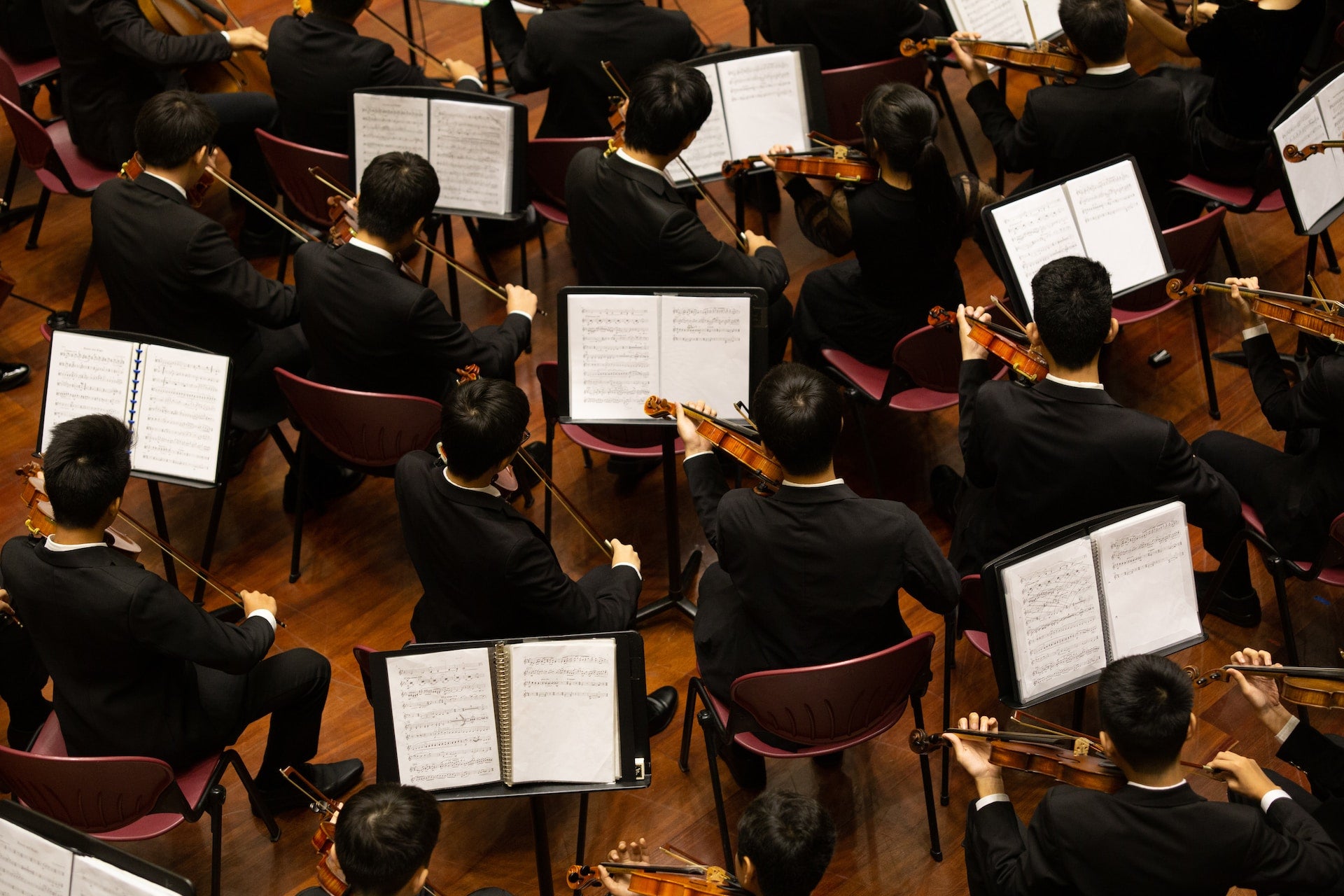Playing in an orchestra is a beloved experience for a classical musician at any level. For students, they may play in a private youth orchestra, in addition to their school ensemble. For adults, there are multitudes of community orchestras from which to choose. Orchestra is something that has become so normalized for the modern classical musician, it is hard to imagine anything different. However, a full symphony orchestra is a rather recent development in the history of western music. Before orchestra, many preferred consort, or chamber music. The modern orchestra emerged during the 1800’s as a response to the ideas of experimental composers. Men like Claudio Monteverdi, Richard Strauss, Gustav Mahler, and others paved the way in shaping the modern symphony orchestra.
Ancient Greece to Claudio Monteverdi
The ideals of classical music originate from the desire to recreate the artistic concepts originating from Ancient Greece. Seikilos Epitaph is the earliest example we have of a complete, notated musical work. For thousands of years, composers have strived to recreate the harmonies and musical concepts that were present in music from Ancient Greece. Today, there are remnants of these notions. The western musical mode names, ionian, dorian, phrygian, lydian, mixolydian, aeolian, and locrian, all originated from the Ancient Greek modes. It is important to note that the modes of ancient Greece are not the same as the modern musical modes. The names of the modern musical modes were taken from the names of the Greek modes, as a form of respect.
Claudio Monteverdi’s opera L’Orfeo was first performed on February 24th, 1607. Although L’Orfeo may not have been the first opera ever created, L’Orfeo is considered to be the oldest opera ever performed. In addition to this novelty, L’Orfeo took huge leaps into defining ensemble music. Before L’Orfeo, ensemble music, known as consort music at the time, was typically independent of vocalists, and would be a small ensemble, much like a modern-day string quartet. L’Orfeo was the first time a semblance of a modern, symphonic orchestra was presented to the masses.
The Greats of the 1800’s
The works of composers such as Ludwig von Beethoven and Richard Strauss cemented the definition of what defines a symphony orchestra. Beethoven is widely viewed as marking the transition between the classical era and the romantic era of music. His early works are reminiscent of Mozart, and are, at points, delicate. However, by his 9th symphony, his classical sensibilities have clearly been altered by new, romantic notions. Classical symphonies typically range from 20-30 minutes in length while Beethoven's final symphony takes over an hour to perform. Additionally, classical symphonies are incredibly successful with a reduced symphony, with fewer players on each part. The pure passion and drama in Beethoven's later works are only accentuated with a greater number of musicians. Richard Strauss was born in 1864, 94 years after Beethoven. The symphonic works of Richard Strauss are grand pieces, sometimes requiring over 100 musicians in order to perform. Richard Strauss truly cemented the idea of what is a modern symphony orchestra. If you listen to the first few minutes of Richard Strauss’s Ein Heldenleben, you can experience the powerful sound of a full orchestra, with rich strings, strong brass, wondrous woodwinds, and bombastic percussion. This is the sound that remains in prominence to this day.
Gustav Mahler lived from 1860-1949, and is remembered as a post romantic composer. Works as early as his first symphony highlight how he separates himself from the notions of romantic music. This symphony is full of wonderful melodies, as well as ambiguous ambience, a trademark of 20th century music. Although this symphony was first premiered in 1889, the seeds of 20th century music are present in this symphony.
The definition of a modern orchestra is ever changing as time passes on. Composers constantly challenge the known and push ensembles and their audiences to their musical limits. This continuous experimentation is what has kept the musical spark alive from ancient Greece to present day.



Leave a comment